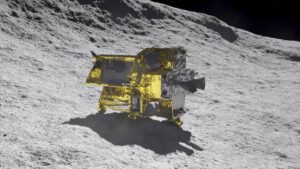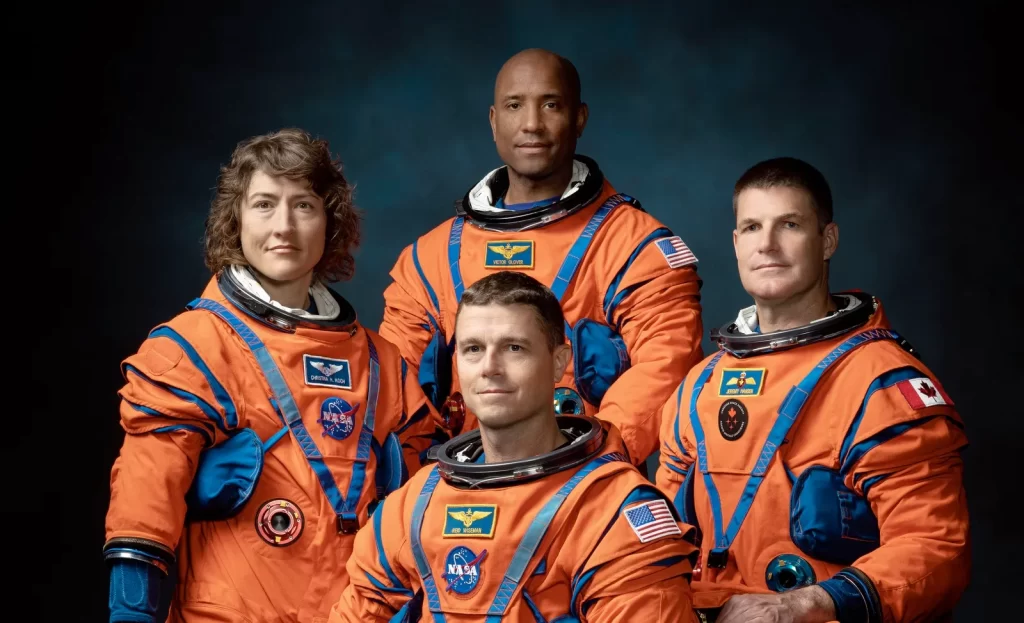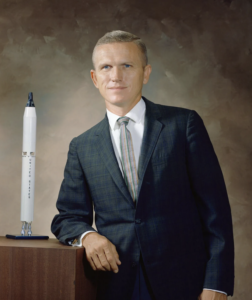“We do these things not because they are easy, but because they are hard.” President John F. Kennedy.

These things happen. John F. Kennedy had it right. At Rice University on September 12, 1962, he said, “We do these things not because they are easy, but because they are hard.”
The Japanese lunar probe’s (SLIM) failure has percolated in my mind for the last couple of weeks. The probe made a pinpoint landing near the rim of the Shioli Crater on January 19, within 300 feet of its target. Unfortunately, it landed on its head!
I think of the thousands of Japanese engineers, scientists, computer specialists, astronomers, and navigation experts who worked on this project for over a decade and the 125.7 million Japanese citizens who watched this great national enterprise with breathless pride.
With the landing, however imperfect, Japan became the fifth nation to land a probe on the moon: USSR (1956), USA (1966), China (2013), India (2008), and Japan (2024).
Feverish work at Japan’s space agency JAXA has enabled the SLIM probe to perform some of its intended functions — even upside down. Just before it landed, SLIM released two miniature rovers, one of which took the now-famous photograph of the probe looking like R2-D2 on a very bad day. The engineers at JAXA have managed to coax SLIM into analyzing 10 moon rocks, more than had been expected, and one JAXA official said, “We are hoping that the rock analysis will lead us to the origin of the moon.”

Amazing.
The inverted landing of the $125 million SLIM probe makes us realize not what can go wrong but how many things must go exactly right for one of these incredibly complicated space missions to succeed. The Japanese probe, as Maxwell Smart (Agent 86) used to say on Get Smart, “missed it by that much!” I remember learning that the Saturn V rocket (the one that took Apollo astronauts to the moon) had more than 5 million parts. (Techno-moron that I am; I had always thought of the rocket as just a big empty tube with lots of fuel in it!)
Think of all the things that must go right even to achieve a soft landing on the moon:
- The rocket had to lift the payload off the launchpad and into space until the stern drag of the Earth’s gravity was overcome.
- The probe had to make midcourse corrections to ensure it would not miss the moon.
- Retro rockets had to fire to slow the probe down to ensure a soft landing.
Sound easy? A lunar probe is projected from one moving (and spinning!) orb to another moving orb a quarter of a million miles away. This is like using a rifle to fire a bullet from a moving speedboat at a cheetah sprinting across a landscape three miles away. Every successful rendezvous — with another spacecraft or with another celestial body — is a triumph of Newtonian mechanics. And some tricky math!
Japan’s probe achieved the most precise landing in space exploration history. Missions are regarded as successful if probes land within a few kilometers of their intended target. Japan’s unprecedented precision was made possible thanks to the usual landing radar systems and an ingenious laser system that calculated the probe’s precise altitude above the lunar surface.
Japan will return to the moon soon; this time, they will likely get it right.
First, space ventures seldom go as planned. It is worth noting that the Soviet Union’s first moon probe, Luna 2, crashed near the Sea of Serenity on September 14, 1959. Early U.S. attempts to send vehicles to the moon routinely failed, mostly on the launch pad or near the Earth. Ranger 3 in 1962 missed the moon altogether. Ranger 4, later that spring, hit the far side of the moon and lost contact with the Earth. Ranger 6 in 1964 impacted the moon but sent no photographs due to a power failure. It was on June 2, 1966, that the U.S. accomplished a successful soft landing on the moon with its probe Surveyor 1.
America’s first rockets blew up on or just above the launch pad so often in the late ’50s and early ’60s that astronaut Guss Grissom witnessing the explosion of an unmanned Atlas 7-D rocket shortly after liftoff on May 18, 1959, less than a year before that same rocket hurled Alan Shepard into space, said, “Are we really going to get on top of one of those things?” Shepard, who was also on hand to witness the explosion, said, in a perfect exhibit of the “right stuff,” “Well, I’m glad they got that out of the way.”
It’s Still Hard
More than half a century later, things routinely go wrong even for the two principal members of the Space Exploration club. Russia’s Luna 25 lander crashed on the moon in August 2023. This was the first Russian moon mission in 47 years. In part because Vladimir Putin wants Russia to regain its status as a major world power, the crash was a devastating blow to national prestige.
Remember, however, that the USSR held the lead over the U.S. in space achievements for an entire decade. Russia was first to put a satellite in orbit, first to put a man in space (Yuri Gagarin 1961), first to put a woman in space (Valentina Tereshkova 1963), first to send two and then three individuals into orbit at the same time, first to conduct a spacewalk (Alexie Leonov 1965), first to place a controlled rover on the moon (1970) and first to send a probe to the moon (1959).
Nor is the U.S. immune. Remember when America’s Mars Climate Orbiter missed the red planet in September 1999 because engineers at the Jet Propulsion Laboratory in Pasadena, California, failed to make a simple conversion from English units to metric? That mission may represent the greatest single blunder — the greatest single unforced error — in space exploration history. Well, there is the Hubble Telescope’s initially out-of-focus lens and mirror system (1994). The telescope was given corrective lenses on one of the five Space Shuttle missions servicing Hubble.
Even Now, in 2024
The Peregrine lunar landing mission launched on January 8 this year did not survive a catastrophic fuel leak just hours into its flight. It is thought to have burned up when Astrobotic, a Pittsburgh-based company under contract with NASA, redirected the stricken craft to return to its home planet and burn up over the Pacific Ocean.
Just last Thursday, February 15, however, another lunar probe, Odysseus, a lunar lander developed by a Houston-based company called Intuitive Machines, successfully began a journey that should permit it to land at a crater named Malapert A near the moon’s south pole. Stay tuned.
NASA hopes to send its four-personed Artemis II mission to orbit (but not land on) the moon sometime in 2025 or 2026. China has said it will send humans to the moon by 2030.

Thus far, only 12 individuals, all men, and all Americans, have walked on the moon. The last was Eugene Cernan, the Apollo 17 commander, on December 14, 1972. The failure of the Japanese mission, the 2023 Russian Luna-25 mission, and the American Peregrine mission remind us that America was … well, lucky to get them there safely and bring them home safely, given how often things go wrong in space travel. Before the advent of the problematic Space Shuttle (1981), no American astronaut had died in space, though three men were killed on the ground when fire broke out in the Apollo 1 Command Module on January 27, 1967.
The fact that the Lunar Excursion Module (LEM) on Apollo missions 11, 12, 14, 15, 16, and 17 landed safely on the moon is little short of a miracle.
Back then, NASA was working with what today we regard as primitive technologies — meager onboard computers, rudimentary video cameras, and highly pixilated digital photographs. Through Apollo 17, the slide rule was as crucial as the crude computers available in Houston and aboard the spacecrafts.
The Space Shuttle Challenger blew up shortly after takeoff on January 28, 1986 (O-ring failure), killing seven. The Space Shuttle Columbia broke up over Texas as it returned from a 16-day mission on February 1, 2003, killing seven.
So far, humans have sent more than 680 individuals into space. The overwhelming majority of them have returned safely to Earth, often with spiritual epiphanies they are sometimes eager and sometimes reticent to reveal. The Russians have never been very forthcoming about the cosmonauts who have died in space or on the launch pad. The best estimates suggest that approximately 30 men and women have lost their lives during or just before space flights.

We’ve been fortunate. But every time you strap humans into a minivan-sized capsule on top of millions of gallons of highly flammable fuel — a launch is a controlled explosion, said Norman Mailer — there is no guarantee they will live to tell about it. When Frank Borman’s wife Susan went to NASA officials in the fall of 1968 and demanded that they tell her honestly her husband’s chances of returning safely to Earth, 50-50 they said. That gave her some comfort.
Borman died quietly in Montana on November 7, 2023. He was 95 years old.
Editor’s note: This is one of two recent articles by Clay on exploring space. You can read the other here: My Life as a Space Junkie.
